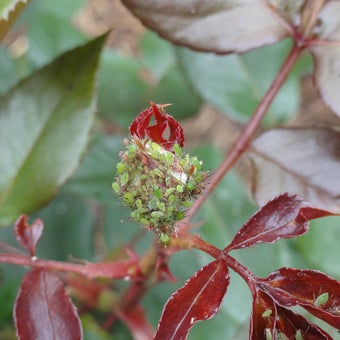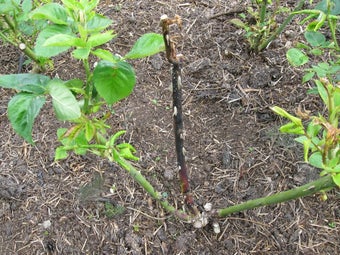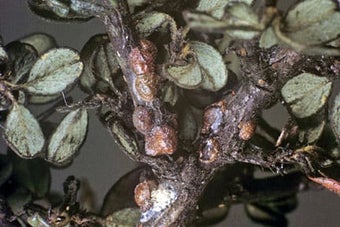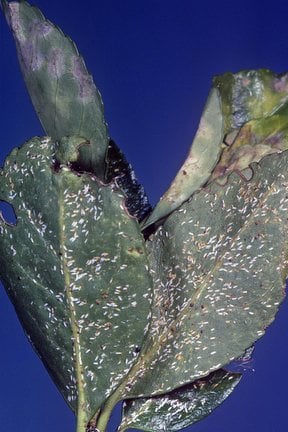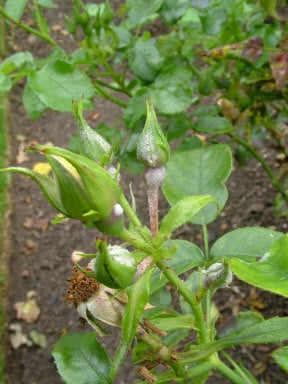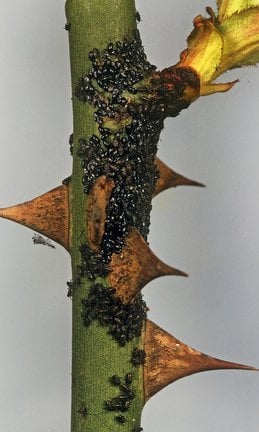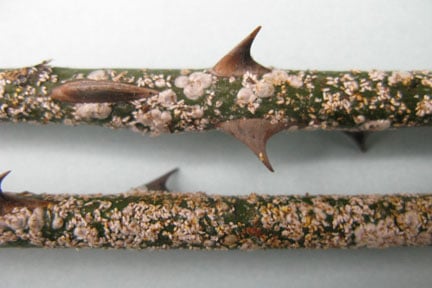
Quick facts
Common name - Scurfy rose scale
Scientific name - Aulacaspis rosae
Plants affected - Roses (mainly species Rosa) and blackberry (Rubus fruticosus)
Main symptoms - Small flat whitish brown scales on stems
Most active - Spring and Summer
What is scurfy rose scale?
Scale insects are sucking true bugs belonging to several families in the Hemiptera. Typically the adults are immobile having a flattened or raised appearance, with no visible legs. They often look like a ‘scale’ on a leaf or stem, many species produce a white wax often covering egg masses. There are more than 100 species found in Britain, 26 of which have been introduced. More than 25 species can be found in gardens or on houseplants.
Like all scale insects scurfy rose scale is a true bug that feeds on plant sap. As adults they are immobile and covered in a waxy ‘shell’. Male scales are flat, narrow greyish white scales, up to 1 mm in length. Female scales are pear-shaped and up to 2.5 mm long. Eggs are laid in July or early August and hatch in August to September.
The crawler nymphs are orange and wonder around on plant material and can be distributed from plant to plant in wind currents. The nymphs soon become sedentary developing into scales. In this species the male scales develop into winged adults in May or June, the females remain under the scale. Mating occurs in May or June.
Symptoms
Scurfy rose scale can completely encrust parts of rose stems. Large populations can reduce plant vigour although unlike some other scale insects this species does not produce honeydew.
Management
- Where possible tolerate populations of scale insects. Well-tended healthy plants are able to tolerate light populations of these insects and so they do not necessarily require management
- Encourage predators in the garden, some ladybirds, parasitoid wasps and some birds will eat scale insects
- Adult scales and egg masses can be removed when seen but this may not reduce large populations
- Scurfy rose scale can be difficult to manage, consider removing heavily affected plants however roses, and other plants in the rose family, can be susceptible to replant diseases.
